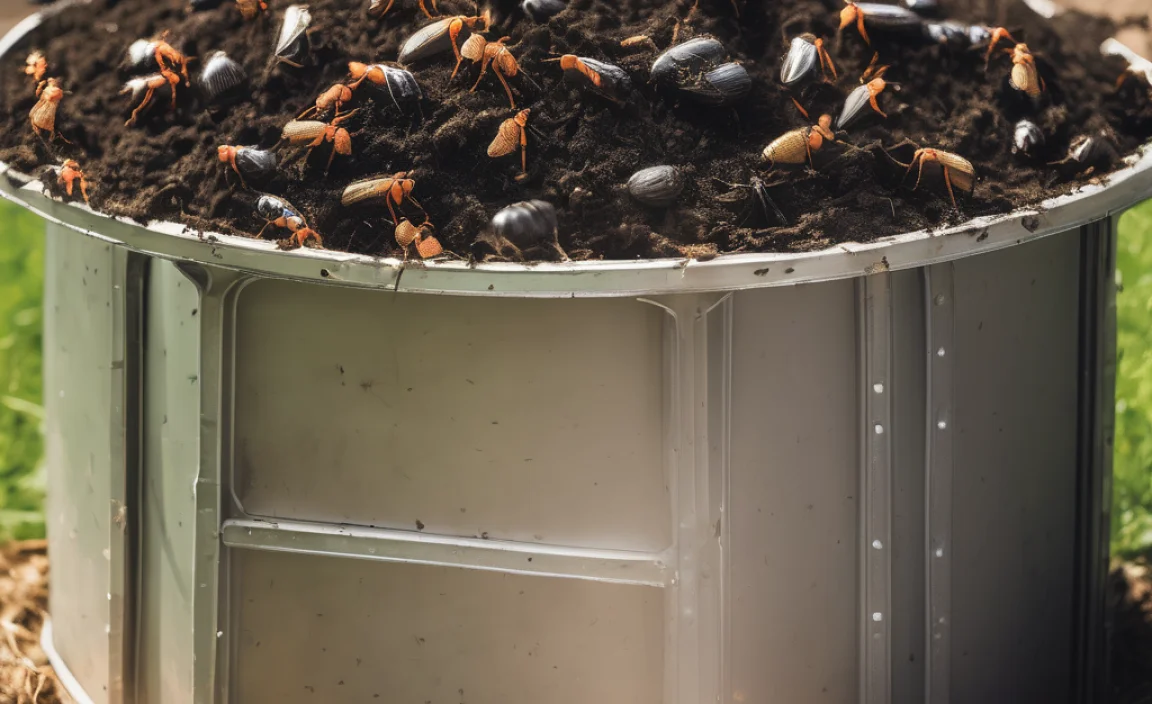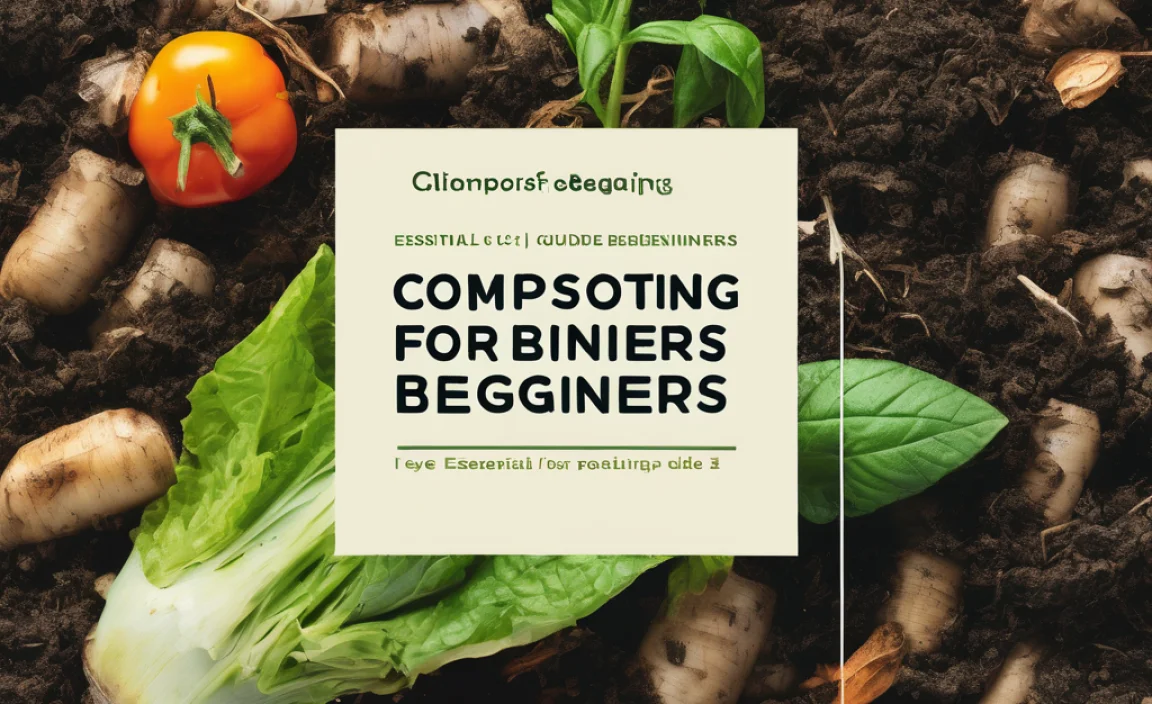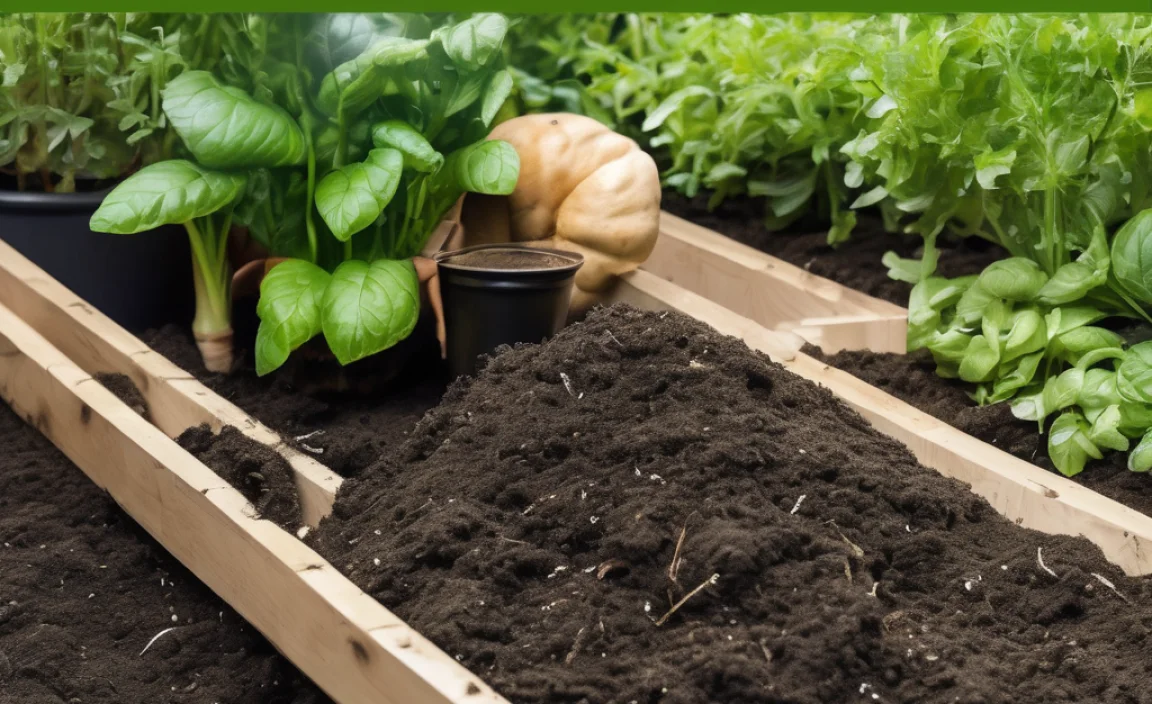Have you ever heard of vermicomposting? It’s a cool way to turn kitchen scraps into rich soil. Imagine a world where worms are your waste warriors! That’s what vermicomposting is all about. It sounds a bit yucky, but it’s super helpful for our planet. Worms eat your food waste and turn it into something magical. Want to learn more about the benefits of this eco-friendly process?
Key Takeaways
- Vermicomposting turns waste into rich nutrients for soil.
- It’s a fun way to recycle kitchen scraps.
- Worms help reduce landfill waste.
- It’s easy to start at home with simple tools.
- Unlocks many vermicomposting benefits for gardens.
Vermicomposting Benefits For Soil
Vermicomposting is like a secret recipe for amazing soil. Worms, especially red wigglers, eat food scraps. They turn these scraps into vermicast, a rich, nutrient-filled soil. This soil is excellent for plants. Your garden will thank you for using vermicompost! Healthy plants grow from healthy soil. Worms do all the hard work, so you don’t have to. It’s a natural process that helps the environment and your garden.
- Worms create rich soil called vermicast.
- Helps plants grow better and stronger.
- Reduces the need for chemical fertilizers.
- Naturally balances soil nutrients.
- Improves soil structure and water retention.
- Increases plant yield and health.
- Encourages beneficial soil microbes.
When you use vermicompost, your plants get natural nutrients. They grow more robust without harmful chemicals. This makes them healthier and more productive. Plus, the soil holds water better. This means less watering and more savings for you. Vermicomposting benefits gardens by making soil perfect for growing. It’s a win-win for you and the environment!
Fun Fact or Stats : One pound of worms can eat half a pound of food a day!
How Do Worms Turn Waste Into Treasure?
Worms are like tiny magicians. They eat food scraps and turn them into soil. But how do they do it? Worms have a special digestive system. They munch on food and grind it down. Their guts are full of bacteria. These bacteria help break down the food into simple nutrients. The process results in vermicast, a super soil. Isn’t it amazing how worms can change trash into treasure?
Can You Start Vermicomposting At Home?
Yes, you can! Vermicomposting is easy to do at home. You need a container, worms, and food scraps. Start by getting a bin with small air holes. Place it somewhere cool and dark. Add some bedding like shredded paper. Next, introduce your worms. Red wigglers are best. Feed them your kitchen scraps. Avoid meat and dairy as they smell. Watch as your worms transform trash into gold.
Why Is Vermicomposting Important For The Environment?
Vermicomposting helps reduce waste. Food scraps in landfills create harmful gases. Worms eat these scraps instead. This reduces the waste going to landfills. Less waste means less pollution. Plus, vermicomposting creates nutrient-rich soil. This soil helps plants grow without synthetic fertilizers. Healthy plants can help clean the air. Overall, vermicomposting is good for Earth!
How To Set Up A Vermicomposting Bin
Setting up a vermicomposting bin is fun and easy. First, find a plastic or wooden bin. It should be shallow and have air holes. Line the bottom with moist bedding. Shredded newspaper works well. Add a handful of soil for grit. Now, it’s time for the worms. Red wigglers are the best workers. Introduce them to their new home. Feed them fruit and veggie scraps. Avoid over-feeding to prevent smells.
- Find a bin with air holes.
- Use shredded newspaper for bedding.
- Add a small amount of soil.
- Introduce red wiggler worms.
- Feed them fruit and veggie scraps.
- Avoid meat and dairy products.
- Keep the bedding moist.
It’s important to monitor your bin. The bedding should be moist, like a wrung-out sponge. Turn the bedding occasionally to aerate it. Feed your worms once a week. Over time, you’ll notice dark, rich soil forming. This is your vermicast. Use it to enrich your garden. Setting up a vermicomposting bin is a rewarding way to recycle waste and enjoy vermicomposting benefits.
Fun Fact or Stats : Red wigglers can eat their body weight in food every day!
What Items Can You Compost?
You can compost many things in a vermicomposting bin. Fruit and vegetable scraps are great. Coffee grounds and tea bags work too. Paper products, like shredded paper and cardboard, are welcome. But avoid composting meat, dairy, or oily foods. These attract pests and smell bad. Worms love plant-based waste. Keep their menu simple for the best results. The simpler, the better!
Where Should You Place Your Vermicomposting Bin?
Place your bin in a cool, dark spot. The basement or garage works well. Avoid direct sunlight. Worms like temperatures between 55 and 77 degrees Fahrenheit. Too hot or cold can harm them. Keep the bin away from vibrations. Worms get stressed if disturbed. A quiet corner is best. Check the bin regularly to ensure everything is okay. A happy worm bin means happy worms!
How Often Should You Harvest Vermicast?
Harvesting vermicast depends on your bin size and worm population. Generally, every three months is good. You’ll know it’s time when the bin is filled with dark, crumbly material. To harvest, move the bedding to one side. Add fresh material to the empty side. Worms will migrate to the new food. After a week, collect the vermicast. It’s ready to enrich your garden!
Common Problems & Solutions In Vermicomposting
Vermicomposting is usually easy, but problems can happen. Smelly bins mean too much food or moisture. Reduce feeding and add dry bedding. Fruit flies are annoying. Cover the food scraps completely with bedding. Worms escaping? The bin might be too wet or dry. Adjust the moisture level. Mold is a sign of too much food. Feed less and monitor the bin. Solving these issues ensures a happy worm bin.
- Smelly bins need less food and more dry bedding.
- Fruit flies are controlled by covering scraps.
- Escaping worms need moisture adjustments.
- Mold requires reduced feeding.
- Check temperature to keep worms comfortable.
- Use screened lids to prevent pests.
- Avoid over-feeding to keep bin balanced.
Keep an eye on your worm bin. Regular checks prevent most problems. Adjust feeding and moisture as needed. Happy worms mean successful vermicomposting. Solving these problems leads to a productive composting system. Worms do their best work when conditions are right. Pay attention to their needs for the best results. Vermicomposting benefits the environment and your garden.
Fun Fact or Stats : Worms can live up to four years if well cared for!
What Should You Do If Your Bin Smells?
If your bin smells, it’s time to investigate. Check for too much food. Too much can rot instead of compost. Remove excess scraps and add dry bedding. This helps soak up moisture. Ensure the bedding is not too wet. It should feel like a damp sponge. Proper airflow is also crucial. Make sure your bin has enough air holes. Adjust these factors and the smell should disappear.
How Can You Control Fruit Flies?
Fruit flies love to invade compost bins. To control them, cover scraps with bedding. This stops them from laying eggs. Ensure your bin has no gaps for them to enter. You can also set traps. A bowl of vinegar with a cover works well. Poke small holes in the cover. Fruit flies get trapped inside. Soon your bin will be fly-free and fresh!
Why Are Worms Escaping?
Worms escape when unhappy. Check if the bin is too wet or dry. Balance the moisture by adding or removing bedding. Ensure the bin isn’t too hot or cold. A comfortable bin keeps worms happy. If troubles persist, check food quality. Rotten food isn’t good for them. Provide fresh scraps. Adjusting these elements helps keep worms in their home.
Comparing Vermicomposting To Other Composting Methods
Composting can be done in many ways. Vermicomposting uses worms and is ideal for small spaces. Traditional composting relies on bacteria and heat. It requires a larger area. Bokashi composting is another option. It uses fermentation and can handle more food types. Each method has pros and cons. Choosing the right one depends on your space and needs.
| Method | Space Needed | Time to Compost | Pros |
|---|---|---|---|
| Vermicomposting | Small | 2-3 months | Great for indoors |
| Traditional Composting | Large | 6 months | Handles yard waste |
| Bokashi Composting | Medium | 4-6 weeks | Handles meat and dairy |
| Trench Composting | Variable | 6-12 months | Simple, no equipment |
- Vermicomposting is great for small spaces.
- Traditional composting needs more room.
- Bokashi handles more food types.
- Trench composting is simple.
- Each method has different timescales.
- Choose based on your needs and space.
- Mix methods for best results.
Fun Fact or Stats : Vermicomposting can be done indoors all year round!
What Makes Vermicomposting Unique?
Vermicomposting stands out for its use of worms. These worms speed up the composting process. The result is vermicast, rich in nutrients. It’s ideal for gardens and indoor plants. The method requires less space than traditional compost. It’s great for apartments and small homes. Vermicomposting is unique because it’s nature working at its best.
How Does Traditional Composting Work?
Traditional composting uses heat to break down waste. Bacteria do the heavy lifting. The process needs air, water, and green and brown materials. It generates heat, speeding up decomposition. This method works well for yard waste. But it needs more space and time. It’s not as quick or compact as vermicomposting, but still effective.
Is Bokashi Composting Right For You?
Bokashi composting is a different approach. It uses fermentation to break down food. This method handles meat and dairy, unlike others. It’s great for those with limited outdoor space. The process is fast, taking just a few weeks. It produces a pre-compost that needs burying. Bokashi is right if you want to compost more types of food quickly.
Conclusion
Vermicomposting benefits both your garden and the environment. It transforms waste into rich soil. Worms do the work, providing nutrients naturally. This method is easy and rewarding. Start vermicomposting to recycle waste and grow healthy plants. Your garden will thrive, and you’ll help the planet too. It’s a small effort with big rewards!
FAQs
Question: What are the benefits of vermicomposting?
Answer: Vermicomposting benefits include creating rich soil and reducing waste. The process involves worms turning food scraps into vermicast, a nutrient-rich soil. This helps plants grow better without chemical fertilizers. It also reduces landfill waste, which benefits the environment.
Question: Can all food scraps be vermicomposted?
Answer: Not all food scraps are suitable for vermicomposting. Fruits and vegetables are perfect. Avoid meat, dairy, and oily foods, as they attract pests and create odors. Keeping the menu simple for worms is key to successful vermicomposting.
Question: How do you start vermicomposting at home?
Answer: Start vermicomposting by getting a bin with air holes. Add moist bedding like shredded newspaper. Introduce red wiggler worms. Feed them fruit and veggie scraps. Keep the bedding moist. Soon, you’ll have vermicast for your garden!
Question: How does vermicomposting benefit the environment?
Answer: Vermicomposting benefits the environment by reducing landfill waste. Food scraps in landfills produce harmful gases. Worms eat these scraps, turning them into useful soil. This reduces pollution and helps grow healthy plants without chemicals.
Question: What issues might arise with a vermicomposting bin?
Answer: Common issues include smells, fruit flies, and escaping worms. Smells mean too much food or moisture. Fruit flies can be controlled by covering scraps. Escaping worms indicate a bin that’s too wet or dry. Adjustments solve these problems effectively.
Question: What’s the difference between vermicomposting and traditional composting?
Answer: Vermicomposting uses worms to decompose waste quickly. It’s ideal for small spaces. Traditional composting relies on heat and bacteria. It needs more space and time. Both methods produce nutrient-rich soil, but vermicomposting is faster and more compact.



